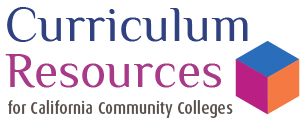Curriculum committees should be aware of some of the technical aspects of managing curriculum at the local level and that includes understanding how courses may be coded. Specifically, there are Taxonomy of Programs (TOP) codes to identify the discipline area for a course or program, and the Chancellor’s Office provides a crosswalk for California TOP codes to the federal Course Identification Program (CIP) codes. Courses are also coded with data elements used to identify course basic (CB) information, such as whether or not a course is transferable or basic skills and if the course has a prerequisite. TOP and CB codes may be revised from time to time, and even minor changes to the codes can influence decisions about local curriculum development and approval.
Why are the codes important? Courses and programs are tracked across the state as well as locally for data and evidence of student success and other important outcomes. Being sure that courses are correctly coded will provide reliable data on student progress and achievement. Some funding mechanisms in the state are also tied to how courses are coded. All curriculum committee members should be knowledgeable about the different codes and how coding a course in a particular way may influence the perceived success of students and the college.
While it is not essential that every common course (say English 1A) across the state be coded exactly the same, there should be great deal of similarity within the coding of similar courses. The basic skills project (CB 21 and 22) that defined the levels below transfer in English and mathematics helped to align common courses across the state in order to show student progress through pre-transfer, basic skills courses. Discipline faculty across the state can work to identify common course names and coding when doing so benefits students.

